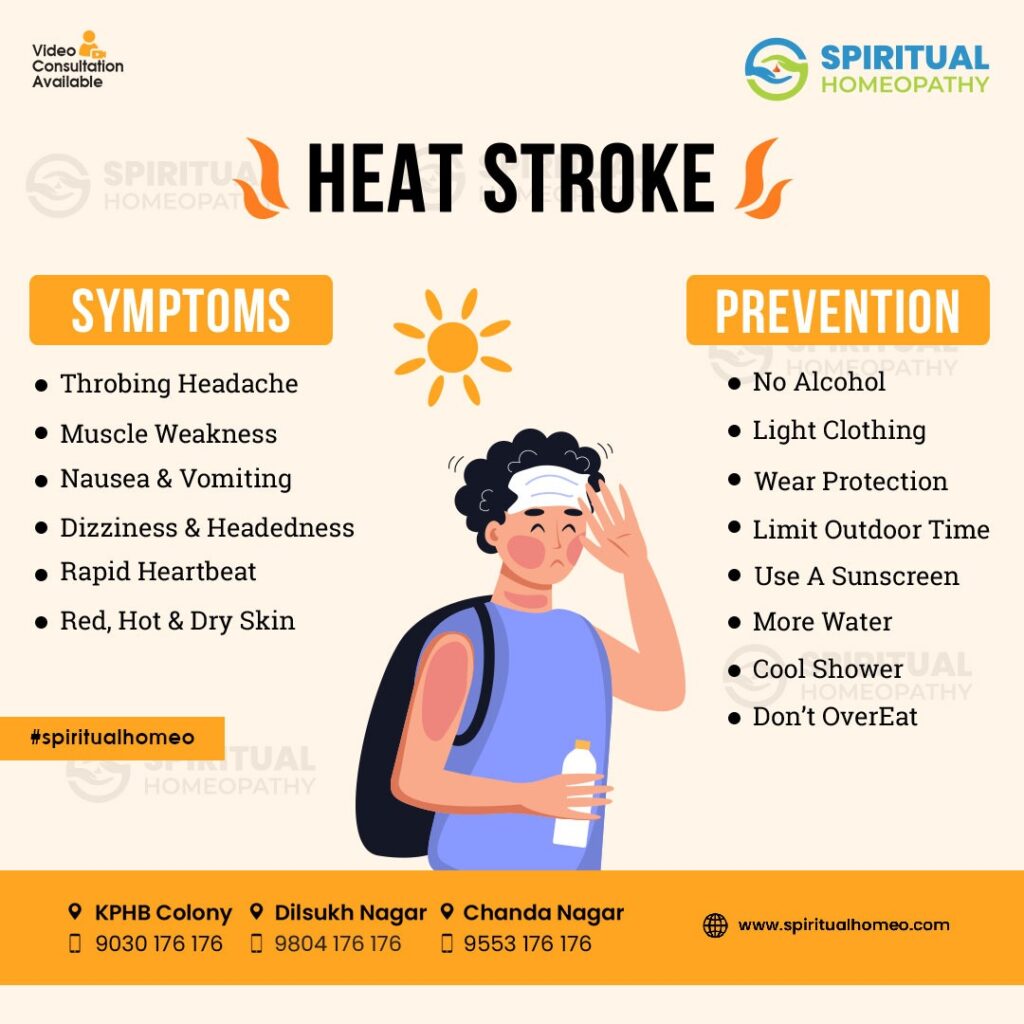Heat stroke is a severe heat-related illness that occurs when the body’s internal temperature rises to a dangerous level. It is considered a medical emergency and requires immediate attention. Heat stroke can occur as a result of prolonged exposure to high temperatures, particularly in hot and humid environments. It is important to be aware of the signs and symptoms of heat stroke and take appropriate measures to prevent and treat it.
Symptoms of heat stroke may include:
High body temperature: A core body temperature of 104°F (40°C) or higher is a characteristic sign of heat stroke.
Altered mental state or behavior: Confusion, agitation, irritability, delirium, or seizures may occur.
Hot, dry skin: The skin may feel hot to the touch and appear dry without sweating.
Rapid heartbeat: The heart rate may be rapid and strong.
Headache and dizziness: Throbbing headache and dizziness are common symptoms.
Nausea and vomiting: Feeling nauseous or vomiting may occur.
Rapid, shallow breathing: Breathing may be fast and shallow.
Muscle cramps or weakness: Muscles may feel weak, cramp, or become exhausted.
If you suspect someone is experiencing heat stroke, it is crucial to take immediate action:
Call emergency services: Contact emergency medical services or local authorities for immediate medical assistance.
Move to a cooler area: Transfer the person to a shaded or air-conditioned area away from direct sunlight.
Lower body temperature: Start cooling the person by any means available. You can immerse them in a tub of cold water, apply cool water to their body with wet towels or spray them with cool water from a hose. Use fans or air conditioning to facilitate cooling. Avoid using ice baths or extreme cold, as it may cause shivering and constrict blood vessels, hindering heat dissipation.
Monitor the person’s condition: While waiting for medical help to arrive, monitor the person’s vital signs and watch for any changes in their condition. Provide reassurance and support.
Preventing heat stroke is crucial, especially during hot weather or when engaging in activities that generate heat. Here are some preventive measures:
Stay hydrated: Drink plenty of fluids, especially water, to stay hydrated. Avoid excessive consumption of alcohol or caffeinated beverages, as they can contribute to dehydration.
Dress appropriately: Wear loose-fitting, lightweight, and light-colored clothing that allows sweat evaporation. Use wide-brimmed hats and sunglasses to protect your head and eyes from the sun.
Limit sun exposure: Avoid being outdoors during the hottest hours of the day. Seek shade or take breaks in cooler areas when needed.
Take cool showers or baths: Cooling your body with cool water helps regulate your body temperature.
Acclimate to the heat: Gradually expose yourself to hot environments over time to allow your body to adapt to the heat.
Use cooling measures: Use fans, air conditioning, or cool towels to cool down your body during hot weather or physical activity.
Remember that certain individuals are more vulnerable to heat stroke, including older adults, infants, children, people with chronic medical conditions, and those taking certain medications. Take extra precautions to ensure their well-being during hot weather.
If you suspect heat stroke or encounter any severe heat-related symptoms, seek medical help promptly. It is better to take preventive measures and stay vigilant in hot conditions to avoid the risk of heat stroke.



